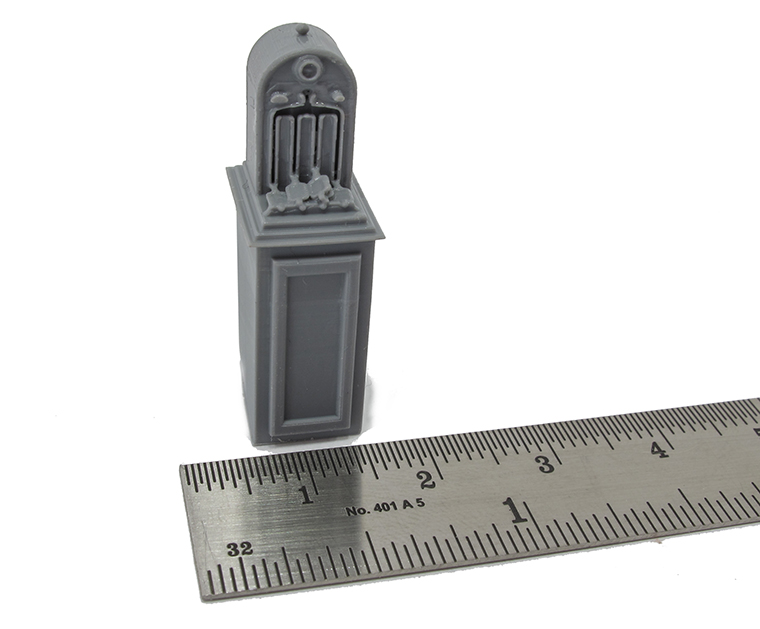01 April 2021
|
Phil Parker examines 3D-printed items which seek to replicate the interior detail of signal boxes.
If you've been lucky enough to visit a traditional signal box, you'll have seen the collection of odd-shaped fittings inside. All are essential, but most will be tricky to model.
We're looking at some of the ModelU range of fittings which make the modellers' life more simple. All are 3D-printed in resin, and just need a coat of paint before fitting into your building. The models we have photographed are from the O gauge range from ModelU, but smaller-scale versions are available.
Tyer's No. 12 Token Instrument

Tyer's Electric Train Tablet system controls access to a single-line stretch of railway. The tablets you can see sticking out of the machine front are passed to a locomotive driver to permit him to travel along a stretch of line. They can only be released after confirmation from the next signal box that the line is clear. The model is 32mm tall including the supporting cabinet.
Stove, kettle and coal scuttle

Signallers only work well if they aren't frozen! The large windows in a signal box mean it's likely to be cold in the winter, so the stove is an essential feature. If you have a stove, you'll need coal and a bucket to carry it in, and most importantly, a kettle for a brew. The stove is 12mm tall and the intention is that a pipe is fitted in the back to take fumes up and out of the chimney.
Signal box cupboard

A pair of useful cupboards 24mm tall.
Small desk

An important part of running a signal box was to keep all the paperwork so the signaller needed somewhere to lean while filling in all the forms and registers. In modern terms, this would be called a standing desk, and the model is 24mm tall. The legs are only 1mm square, the slight bend can be removed with a gentle tweak with fingers.
All this furniture has been 3D scanned from real items, so should be as accurate as possible. The token instrument is especially impressive.
The models would benefit from a very light coat of primer before painting, although the resin will accept both enamel and acrylic paint.








